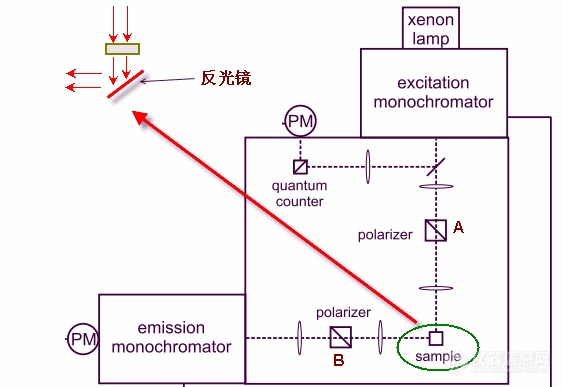
原文由 tutm 发表:
有没有象分光光度计那样既可测试吸光度,又可象荧光分光光度计那样测荧光强度的二合一仪器?
当然荧光分光光度计的检测限低得多,有同样能满足两种测试模式和要求的仪器吗?
有些分光光度计也可以在光路的90度位置附加检测器,但是检测器前没有分光,光源也不行,软件好像也没支持荧光测试。
这个问题发在这儿,我想问题应该与检测器有关,另外也想借nemoium专家的人气,沾点光。呵呵。
原文由 tutm 发表:
没关系,如果结贴后没有理想的建议,我再往那儿发。现在别让这儿停顿下来。而且,看这一期的应该搞仪器的较多,了解这方面的版友更多些,我想机会也会多些。
原文由 nemoium 发表:
这个问题,以前帖子里讨论过,spain那会也说过。
不过在网上找了下,还真没有同时具有测吸光度和荧光的仪器.
一个荧光仪如下图
我想,因为荧光仪的光源更容易激发产生荧光,那是不是可以通过在光源和第一个单色器之间加入滤光片,减少光强,减少产生荧光的可能。其他光路不改变,然后在样品室中,由于荧光是检测器成直角,所以吸光度时,在透射光的位置,放一个反光镜,反射透射光成直角进入检测器,如上图。
图中的polarize不知道什么作用,做成个可拆卸部件,测吸光度时拿走。
把荧光光谱仪改为分光光度计,可能会更容易些。
